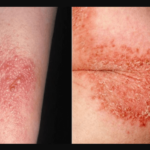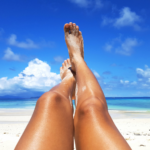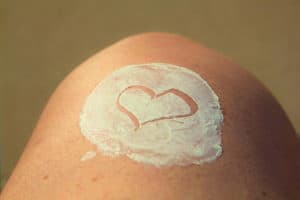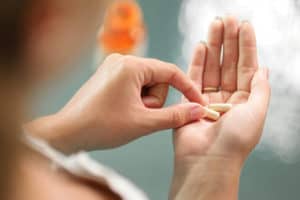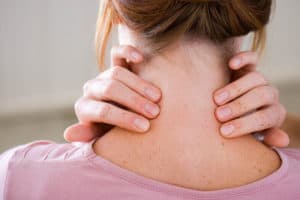Do you have dry skin above your upper lip? This can be irritating, painful, and bothersome. It can also make you feel uneasy and take effect on one’s self-esteem. What causes dry skin above the upper lip? How to treat this skin condition?
Dry skin above the upper lip can be caused by extreme weather conditions, allergies and irritants, habits, and skin conditions. Applying a moisturizer, lip balm, lotion, or even oil can help relieve the flaky and dry patches above the upper lip.
If it still does not go away, it might be a serious medical condition, and it is best advised to consult a dermatologist to avoid worsening the situation.
Some of the causes of dry skin above the upper lip could be treated easily with lip balm and moisturizers. Buying the right kind of moisturizer or lip balm will be beneficial. But some could only trigger and worsen the condition of your skin.
Knowing the underlying cause must be the first step to identifying the treatment for dry skin above the upper lip. Consulting a dermatologist is always a good idea if you cannot find a solution on your own.
Read on to learn more about why your skin is dry above the upper lip, how to treat this issue and how to prevent it from happening.
Also, for an excellent moisturizer, take a look at our top pick, the Anti Aging Facial Moisturizer:
Click here to see it on Amazon.
Causes of Dry Skin Above Upper Lip
Having dry skin above the upper lip could have several causes — from weather conditions to medical skin conditions. To know the causes of the dry skin above your upper lip, you could inspect the symptoms that happen on your skin.
Here is a list of some of the symptoms you can see if you have dry skin above the upper lip:
- scaly, and red rash above the upper lip
- burning and itching sensation on the area
- dry and flaky patches of skin
- small, fluid-containing bumps that looks like an acne
In some cases, dry skin above the upper lip is difficult to heal and can continue for weeks and even months. When it is a chronic and ongoing condition, it is advised to consult a skincare expert because it might be an underlying medical condition.
Causes of dry skin above the upper lip range from weather conditions to allergies and medical skin conditions. Listed below are the main causes of dry skin above the upper lip.
1. Perioral Dermatitis (PD)
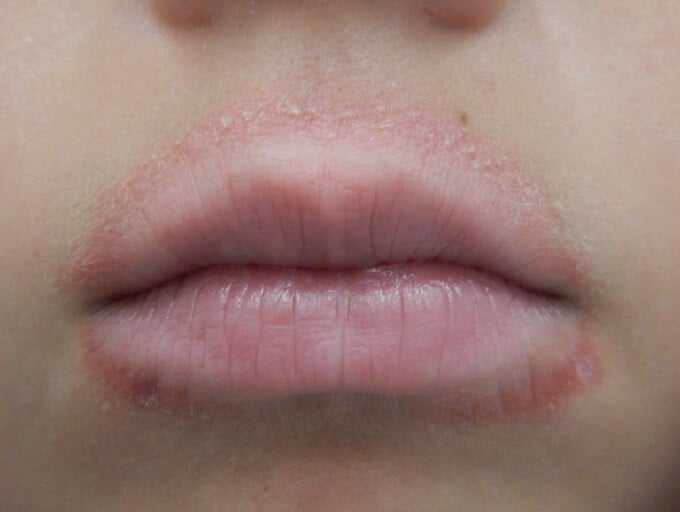
Perioral Dermatitis is often confused with other skin conditions such as rosacea or eczema.
Here is how you can easily distinguish it from other skin conditions — according to the American Academy of Dermatology, it is a skin condition wherein the skin appears to have dry and flaky patches as well as red, acne-like bumps for people with light skin and skin-colored breakouts for people with dark skin.
It is found above the upper lip or around the mouth. The skin becomes extra sensitive and red. It is common in women, but there is still no clear evidence of why it happens.
Allergies and irritants increase the risk of having perioral dermatitis. Experts also say that overuse of topical cortisone creams and strong ointments can also increase the risk of having this condition.
2. Contact Dermatitis
This condition is due to allergens or irritants from skincare products or certain foods that cause inflammation and a dry red rash around your lips.
Allergens and irritants vary from person to person and can come from different sources, depending on your skin type — from what we eat, what skincare products we use, extreme temperatures, or anything that comes in contact with the skin that causes an irritation or allergy.
Cosmetic products have a lot of ingredients that can cause irritation or allergy. Some are essential oils, citruses, denatured alcohols, and many more.
All of these ingredients can irritate, especially on the face, such as above the upper lip. Foods also have irritants that if it comes in contact with your skin, it can cause an allergic reaction.
The most common foods that cause a reaction are citrus fruits, seafood, nuts, and dairy. Toothpaste and mouthwashes can also cause an allergic reaction because of their fluoride content. If you have allergies or irritations to certain foods or cosmetic products, it is best to avoid them.
3. Seborrheic Dermatitis (SD)
Dandruff is the common name for this condition, which affects the scalp as well as the face. On the face, it appears flaky, dry, or crusty. This mostly happens to people with oily skin.
Excessive oil irritates with a certain type of yeast. The irritation causes an itchy feeling on the face. There is not much evidence about why SD happens.
This condition is neither related to hormones, weather, foods, nor skincare products. However, it is found to be associated with a fungus called Malassezia.
It is a condition wherein this yeast exists on the skin. However, many also have these fungi on their skin, but their skin remains normal. SD appears on the eyebrows, corners of the nose, eyelids, ears, and around the mouth.
Seborrheic dermatitis is not the same condition as Perioral Dermatitis. They can be confused because they have almost similar symptoms.
Perioral dermatitis has acne-like bumps and has a red rash above the upper lip, while seborrheic dermatitis has patches of thick, crusty, and peeling skin clustered in small portions around the face. Seborrheic dermatitis can be treated with antifungal medications, unlike perioral dermatitis.
4. Harsh Weather Conditions and Lip-licking
Cold and windy climates can also lead to red, dry, and flaky skin due to lower levels of moisture in the air and the oil glands not secreting enough oil, resulting in dry skin above the upper lip.
Lip-licking is an automatic response where we lick our lips when our lips are dry to “moisturize” them. But instead of making it moist, the saliva only makes the lips and the skin surrounding the mouth dry.
Lip balm containing irritants or allergens will only worsen the dry skin above the upper lip.
Having dry skin above the upper lip can also be called xerosis (it is the condition of having naturally dry skin), but most of the time, it can be an indication of a skin condition such as contact dermatitis or perioral dermatitis.
How to Treat Dry Skin Above Upper Lip
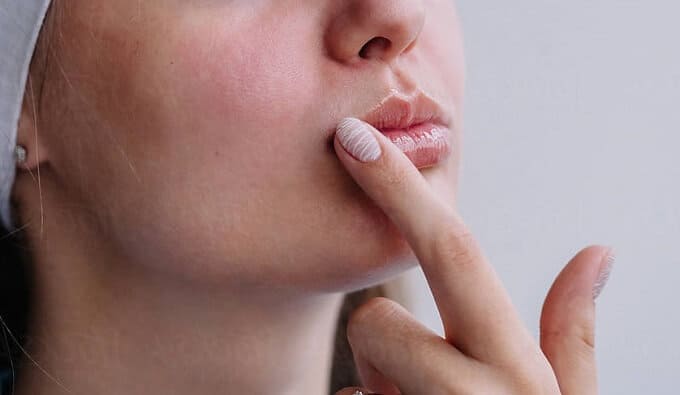
Now we know what causes the dry skin above the upper lip. Depending on the underlying cause, you can take the appropriate steps to relieve the feeling and prevent it from happening. Here are some of the things that you can do:
1. Moisturizer and Lip Balm
Limit your exposure to sudden changes of harsh climates — cold, windy or hot weather. Also, avoid the habit of lip-licking, especially when your lips are dry.
Apply lip balm and petrolatum-based products that do not contain any fragrance or irritants. Use products that provide heavy-duty moisture and protection and last a long time on the lips and skin.
Try the Anti Aging Facial Moisturizer for a rich, ultra-hydrating moisturizer that would be perfect for the skin above your upper lip.
Click here to see it on Amazon.
It has a ton of beneficial ingredients that will keep your skin hydrated and provide nourishment. A little goes a long way; just use a small amount for your upper lip area, and the moisturizer will last.
2. Eliminate Current Products
Have you ever heard the famous saying, “prevention is better than cure”? Contact dermatitis and allergies can be prevented by avoiding products or ingredients that irritate your skin.
Knowing the root cause of your allergies is the primary step to prevent it from happening again. Once the root cause is known, it must be avoided at all times.
Some types of toothpaste and mouthwashes contain fluoride. Fluoride has substances that can irritate the skin. Consult your dentist about possible kinds of toothpaste you should use if fluoride irritates your skin.
Also, go through the ingredients of all products in your current skin care routine, including soaps, shampoos, body washes, etc. Try the elimination method by using only one product for a period of time to determine if it causes any issues and if so, cut it out of your routine.
3. Anti-fungal Medication
If your dry skin is caused by seborrheic dermatitis, it can be treated by applying an anti-fungal medication. Anti-fungal medications such as Clotrimazole Cream, Miconazole Cream, or Terbinafine Cream are available in drugstores.
This should be applied to the needed area twice a day, together with an over-the-counter topical cortisone cream intermittently (for every 3 to 4 days).
Avoid overusing the topical cortisone cream because it could lead to perioral dermatitis. There are also studies where salicylic acid (BHA) and benzoyl peroxide can be helpful for maintenance.
Using the right treatments can show significant improvement in the skin and avoid additional expenses on unnecessary products.
Conclusion — Dry Skin Above Upper Lip
We now know what causes dry skin above the upper lip and what we could do to treat it and prevent it from happening.
Dry skin above the upper lip can be mainly caused by serious skin conditions, harsh weather, or allergens from products or foods.
Some of the causes could be avoided and prevented, but there are situations wherein it is impossible to avoid them. We can apply non-irritating products in these situations to help relieve the dry skin above the upper lip.
In some cases, the use of non-irritating products does not help in treating dry skin. If this happens, try consulting a dermatologist to find out the underlying cause of your dry skin above the upper lip. Dermatologists can provide the right treatment for the specific condition you have.



![Bleeding Pore on Nose [11 Possible Causes and Treatments] bleeding pore on nose](https://skincaregeeks.com/wp-content/uploads/2021/04/bleeding-pore-on-nose-150x150.jpg)
![Bruise Itches [Causes and Treatments for an Itchy Bruise] bruise itches](https://skincaregeeks.com/wp-content/uploads/2021/04/bruise-itches-150x150.jpg)
![Neutral Skin Tone Defined [and Best Colors for Neutral Skin] neutral skin tone](https://skincaregeeks.com/wp-content/uploads/2021/05/neutral-skin-tone-150x150.png)

